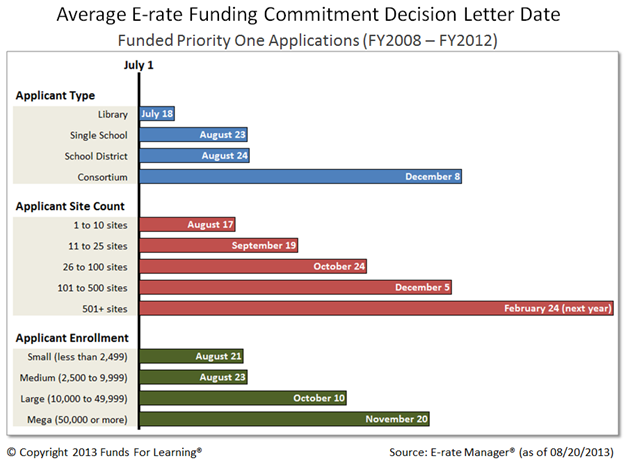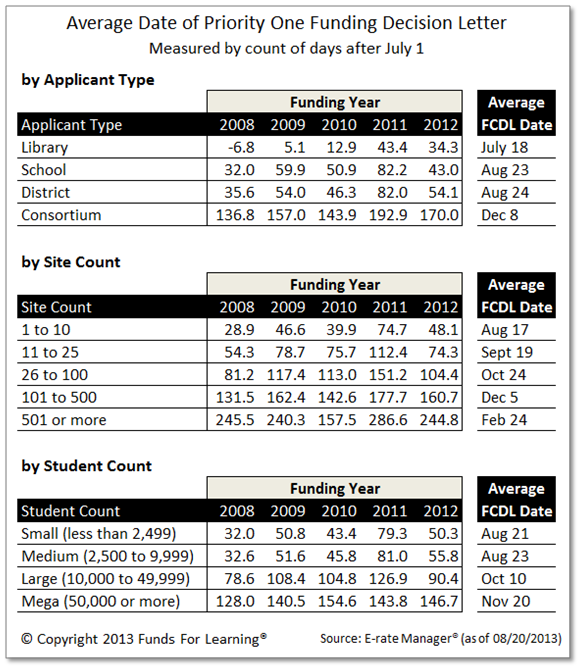A recent analysis by Funds For Learning® highlights the impact that timing plays in the utilization of an E-rate funding decision. The quicker an applicant receives a funding decision, the more likely they will put the money to use.
But what drives the timing of a funding commitment decision letter (FCDL)? There are many factors that impact USAC’s ability to release a funding decision, and for any given applicant or application it is impossible to precisely predict an FCDL date. However, there are macro level factors that clearly impact the FCDL date. These factors are applicant type, site count, and applicant enrollment (for schools). The following chart shows the average FCDL date for Priority One applications over the past five completed funding years.

Consortium applications, applicants with many sites, and school districts with large student enrollments, consistently have longer wait times for Priority One funding commitment decision letters. This is consistent with the additional work and scrutiny involved in processing large applications.
In the FCC’s current Notice of Proposed Rulemaking (NPRM), there is considerable discussion about operational efficiencies and the cost-effectiveness associated with various application types. Commenters should consider the practical realities that large applications represent as they formulate their NPRM responses.
Below is the specific data for each type of FCDL during FY2008 to FY2012.

